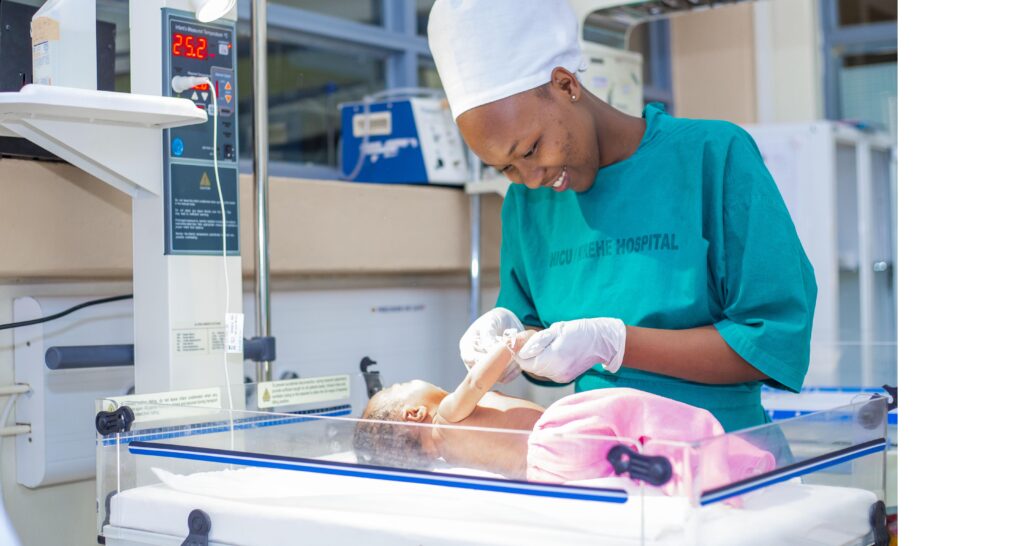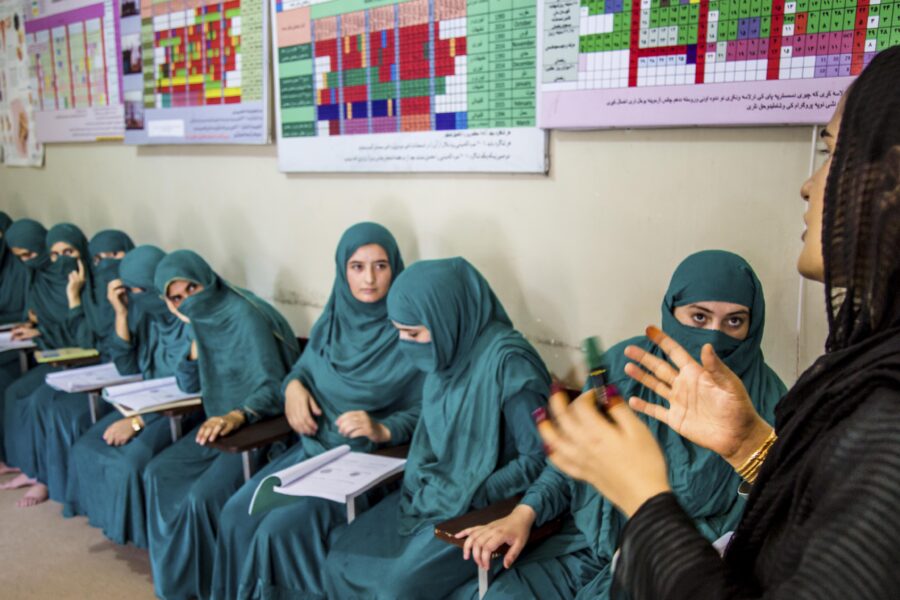To achieve universal health coverage, we must spend smarter
The pandemic shows the critical importance of robust health systems, and that bigger budgets alone are no guarantee of ‘success’. Achieving good health and well-being for all by 2030, while restoring public finances, will need cost-effective spending on health
Health — Global

Higher investment in health correlates with better health outcomes. This is often represented by the Preston Curve, which shows the correlation between economic growth (per capita gross domestic product) and life expectancy. However, the curve also shows that this correlation is not linear. Life expectancy in several low and middle-income countries (LMICs) for a given level of GDP per capita is better than others.
And, as the COVID-19 pandemic demonstrates, some of the so-called highly developed countries with extensive per capita health expenditure have had abysmal health outcomes. There have been wide disparities in COVID-related morbidity and mortality in these countries’ populations, disproportionately affecting the socially marginalized and disadvantaged. Many LMICs have also seen their economies devastated and health systems severely strained.
Good health and well-being are among the top priorities for individuals and nations alike. As defined by the World Health Organization over 50 years ago, “health is a state of complete physical, mental and social well-being and not merely the absence of disease or infirmity.” This was a promise reinvigorated more than 40 years ago in the Declaration of Alma-Ata. The declaration identified primary healthcare as the key to promoting and protecting health for all, deemed essential to ensure sustained human, social, and economic development.
However, the health of a population is not determined solely by health systems, but is greatly influenced by the so-called social determinants of health. These are “the conditions in which people are born, grow, work, live, and age, and the wider set of forces and systems shaping the conditions of daily life.” These forces and systems include economic policies and structures, development agendas, social norms, social policies, and political systems. We can also add the influence of factors such as climate change, environment, and living conditions, and how these factors overlap with conflict and displacement or migration. Recognizing the interconnectedness of these drivers underpins the Sustainable Development Goals (SDGs) and their interdependence.
Resourcing UHC
A recent analysis of the status of implementing the health and health-related SDGs, both globally and in a representative sample of countries, suggests that effective implementation would require appropriate organization and oversight structures, as well as attention to the principles of universal health coverage (UHC). There are wide disparities in health access and coverage globally. Some 3.6 billion people do not get the most essential health services they need and some 100 million are pushed into poverty from paying out of pocket for health services. COVID-19 has made this even more difficult. Few LMICs will meet their targets for UHC and health and poverty-related SDGs without adequate resources, and so must take urgent steps to strengthen their health-financing situation.
The concept of public health financing has been increasingly recognized globally for many decades. In 2005, members of the World Health Organization pledged to develop health-financing systems so that all people have access to services. Today, the expanded repertoire of interventions necessary to achieve UHC requires fiscal space (budgetary room for governments to provide resources for health without undermining fiscal sustainability). In the wake of the COVID-19 pandemic and its consequent fiscal pressures, investment in UHC must not be at the expense of the gains made in maternal, newborn, and child health and nutritional interventions. Worryingly, such reversals are already being observed.
Yet there are also clear examples of countries mobilizing domestic resources and financing to make UHC a reality. Rwanda is a remarkable example of an African country that was able to lift itself from the ashes of a terrible genocide and achieve remarkable gains in public health over the last two decades. True and equitable UHC is not achievable without well-functioning and efficient public health financing, and innovations such as health insurance and conditional cash transfers. This is especially relevant for LMICs as healthcare expenditures have grown rapidly in recent decades with the advent of powerful new treatments. Spending is set to rise further with the inclusion of non-communicable diseases within UHC packages of care.
Global healthcare expenditure as a share of world income has been increasing steadily in recent years, as the health sector continues to expand faster than the economy (although it slowed after the financial crisis of 2007 to 2008). In 2018, global spending on health was $8.3 trillion or 10% of global GDP. The picture between countries, however, is highly variable. The average health expenditure in low-income countries was just $41 per person in 2017, more than 70 times less than in high-income countries, at $2,937 per person. Indeed, the top 1% of spenders account for more than 20% of total healthcare spend.
Health expenditures in LMICs, though lower, may be proportionally greater in relation to GDP. And, unfortunately, in many instances health spending in these countries is regarded by governments as an expense rather than an investment. There are also huge disparities within countries, as health access is low in difficult-to-reach or thinly populated areas.
In many countries, healthcare financing is comprised mainly of public and private funding. This includes government budgets, compulsory or voluntary prepaid insurance schemes, direct out-of-pocket payments by users, and external aid. Healthcare spending is usually focused on infectious diseases in developing countries and accounts for over half of those countries’ overall health spending. In developed countries, meanwhile, non-communicable diseases account for about 30% of healthcare spending.
Health spending from external aid reached its peak in 2014 and has since fallen. Most external aid is being absorbed by middle-income countries and in recent years has surpassed that of low-income countries. As the health sector expands it becomes less reliant on out-of-pocket spending. Total out-of-pocket spending doubled in LMICs from 2000 to 2017 and increased 46% in high-income countries, but this growth has been slower compared with public spending across all income groups.
Getting more bang for the buck
Despite the multiple initiatives and global agendas, most LMICs have yet to seize the growth and development opportunities offered by high-performing health financing and cost-effective healthcare. The focus of these strategies should be to scale up preventive and promotive interventions, which would lead to falls in the cost of treating disease. Evidence suggests that simple solutions for newborn health, immunization against preventable childhood diseases, and micronutrient treatments remain among the most cost-effective and affordable interventions for maternal and child health. Community-based approaches should be further explored in LMICs, as they could both increase outreach and decrease cost per person covered.
Current international collaborations must increase the support to LMICs, especially to countries suffering conflict and humanitarian emergencies. At the same time, developing countries must focus on removing inefficiencies to reduce waste of already limited resources, as an estimated 20% to 40% of health expenditures are wasted. Such LMICs must couple more money for health with more health for the money. Increases in development and health budgets must be accompanied by improved tax revenues from tax evaders. There is evidence that developing countries with higher tax revenues tend to have higher healthcare expenditures. This is an important determinant of progress towards UHC. Reducing waste and inappropriate use, as well as focusing on prevention rather than acute episodic care, have the potential to dramatically improve the effectiveness of healthcare expenditures and thus reduce the need for additional financing. The efforts should be on:
- Increasing efficiency by identifying and focusing on priority areas.
- Improving the use of technology.
- Improving the quality of services by better equipping and training health personnel.
- Putting in place strong monitoring and evaluation systems with independent audits.
The world must realize the need for inclusive growth. What better time to learn than now, with the pandemic threatening to leave lasting economic scars and set development back years, if not decades? COVID-19 has a devastating impact on health systems globally. Nearly all countries have responded to the crisis with exceptional budget allocations, but with the health sector receiving a smaller portion. We need to emerge from this crisis better and fairer and with stronger inter-sectoral collaborations. Academic and development partners must work together to define cost-effective packages of care, as well as innovative financing solutions that also address the underlying determinants of health. There is an urgent need for a global collaborative effort, with development partners, national governments, businesses, and civil society working together to deliver the SDGs by 2030.





